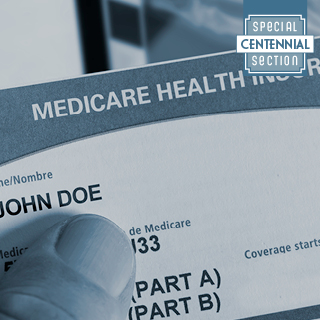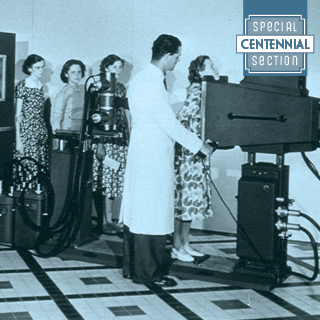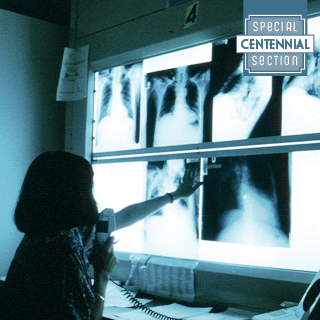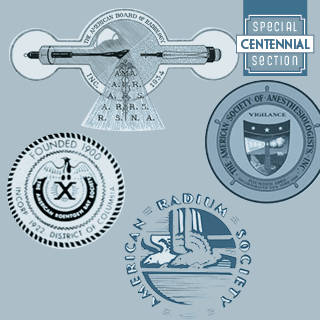James P. Borgstede, MD, FACR
The ACR is a visionary leadership organization with a focus on patients first and foremost. This is what the ACR means to me and why our patients, the public, our physician colleagues and all radiologists need the ACR. Witness the College’s origins in 1923 as an organization with a vision for patient safety in the use of ionizing radiation.
Throughout its now-100-year existence, the ACR has exemplified collegiality, consensus, collaboration and inclusion. These will all be evident at ACR 2023, where we’ll see grassroots representation
from all states, founding organizations and radiologists from diverse backgrounds.
One core strength of the ACR is integrity, exemplified by the College’s visionary leadership in its ACR Appropriateness Criteria® and our accreditation program. When many individuals both inside and outside of medicine and radiology thought these measures were unnecessary, the ACR continued to lead, spurred on by its vision for the future. An example is the Mammography Quality Standards Act of 1992, which ensured people would have access to quality mammography for the early detection of breast cancer. Another was the BI-RADS® criteria, which standardized breast imaging reporting — and became a concept that has expanded into use with other organ systems, including prostate and thyroid.
One of the ACR’s primary roles has been to articulate that radiologists are physicians and that our specialty must be recognized as a practice of medicine. It is because of the ACR’s endeavors in socioeconomics and governmental relations that today’s radiologists are included in Medicare Part B rather than being hospital employees performing radiology as a hospital service. None of our legislative and regulatory successes would have been possible without the ACR’s vision of the necessity for political action so that radiologists had access to governmental leaders to articulate our
position on issues critical to our patients.
To me, the ACR also means research and education. The College has engaged in radiation oncology research through its ACR Center for Research and Innovation for many years and in health policy research through the Harvey L. Neiman Health Policy Institute®. The ACR keeps radiologists up-to-date through the Education Center, the ACR Institute for Radiologic Pathology and many other learning activities.
When I look back on my past work as an ACR volunteer, including my terms as BOC chair and president, I think of a fantastic staff supporting the efforts of volunteers. All of the ACR’s accomplishments could not have been achieved without this wonderful group of people led by ACR CEO William T. Thorwarth Jr., MD, FACR.
One hundred years hence, no one is likely to remember any of us reading this Bulletin article or any of our individual accomplishments. However, it is my hope that those future ACR members will remember what the ACR has accomplished for their patients and their practices and continue to support a fantastic patient-oriented organization. I’m proud to be a part of the ACR. Congratulations on a great first 100 years!
Catherine J. Everett, MD, MBA, FACR
I am just thrilled to co-chair the ACR centennial celebration with Dr. Borgstede. What a great opportunity to honor all before us who relentlessly pursued recognition for radiology as the absolute center of healthcare.
I will borrow extensively from the 2015 presidential address, “ACR: Imagine the World Without Her,” by Paul H. Ellenbogen, MD, FACR. I encourage you to read it in its entirety.
The first absolute defining event for radiologists was the Congressional decision to allow radiologists to be considered physicians in Medicare Part B in the 1960s. What if we had been placed under Part A? Radiologists would have been part of hospital ancillary services, employed and paid like respiratory therapists, speech therapists and other non-physician professionals. I contend that today, we probably would not exist as a specialty.
Outpatient imaging, other than hospital-based, would be performed and interpreted by non-radiologists. Imaging standards would be entirely local, depending on which neurologists owned MRI
centers and which urologists owned CT scanners. The incredible consistency in interpretation and treatment pathways offered by BI-RADs® would not exist. Presumably, surgeons would have their own mammography as part of their offices, with US-guided breast biopsies part of the work that includes mole excision and cholecystectomies. I doubt few, if any, current radiologists — the best and brightest in medicine — would choose our profession as an “ancillary service.”
In the 1980s, two visionary radiologists spearheaded the development of the resource-based relative value scale as a methodology to assess payment for physicians based on time and complexity:
James M. Moorefield, MD, FACR, who served as ACR chair from 1990–92 and president in 1992–93, and Joseph A. Marasco Jr., MD, FACR, who was BOC chair from 1984–86 and president from 1986–87. This prevented the payment methodology of diagnostic-related groups (DRGs) from being applied to physicians.
Today, the ACR appoints the radiology member of the AMA Specialty Society Relative Value Scale Update Committee to sit at the table with other specialties to determine relative value units. Radiology is one of 22 specialties with a permanent seat on the committee. The current chair, Ezequiel “Zeke” Silva III, MD, FACR, is a radiologist. There are more than 150 medical specialties/subspecialties recognized by the American Board of Medical Specialties. What if radiology had a rotating or no seat on this committee? What if we had completely bundled payments via DRGs? Again, it’s highly unlikely the profession, much less our excellence, would exist.
Lastly, and quite personally, I have been actively contributing my time to the ACR over the past 15 years. I made a conscious decision the first 20 years after fellowship to raise my children and build
my practice. I paid my ACR dues, but others were volunteering for the profession and for me, and for that I am grateful. When I was ready to step up and “pay it back,” the welcome I received was astonishing and heartwarming. I must particularly thank my mentor and ACR Gold Medalist, the late Christopher G. Ullrich, MD, FACR, who loved the ACR with a passion.
The value of developing close friendships with radiologists from all over the country, of all ages, with diverse backgrounds, cannot be understated. I have special friends in the North Carolina Radiological Society, as well as others around the country, who I can call anytime. I am part of a delightful Women Rad travel group, which has visited Paris and Ireland, with plans to go to Asheville, N.C.
What a joy to be a member of such an organization as the ACR! Happy birthday to you.




